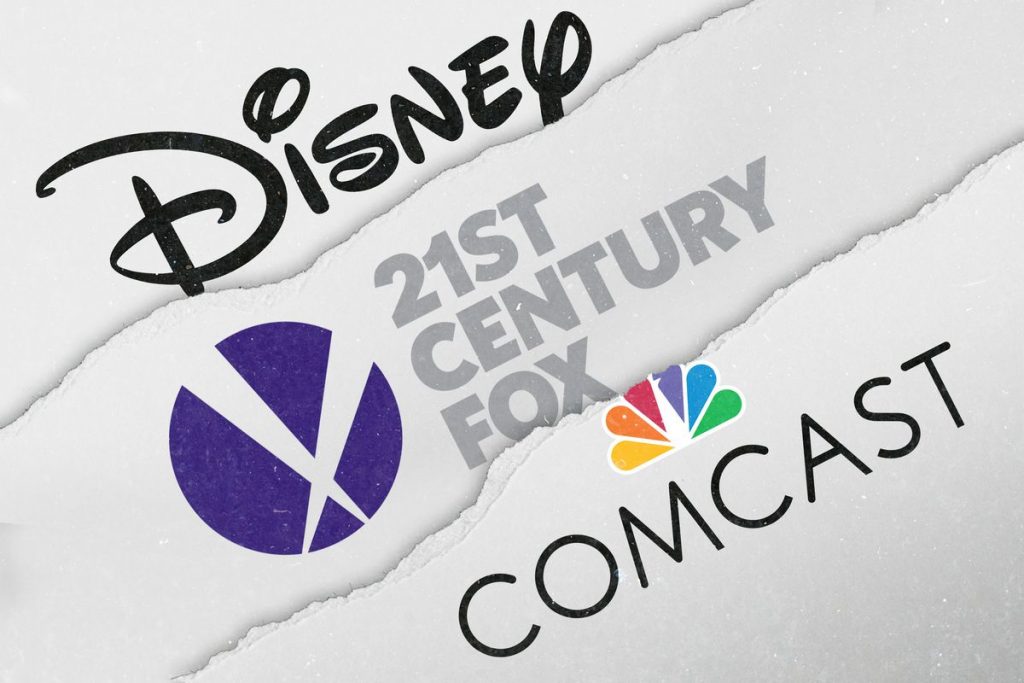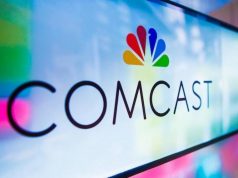This article is about how Comcast makes money. Firstly, we explain the key business segments of Comcast and how the company generates revenue from each of those segments. Then, we share Comcast revenues by business segments and revenue type for the year 2015. Then, we share the revenues, the profits, and the profit margins of Comcast for 2015. Finally, we provide an analysis of Comcast 2015 operating profits by business segments.
Comcast Corporation is a global media and technology company with two primary businesses: Comcast Cable and NBCUniversal. Comcast Cable is one of the largest providers of video, high-speed Internet, and voice services (collectively referred to as cable services) in the United States. NBCUniversal operates news, entertainment and sports cable networks, the NBC and Telemundo broadcast networks, television production operations, television station groups, Universal Pictures and Universal Parks and Resorts.
How Comcast Cable Makes Money?
Comcast cable offers video, high-speed Internet, and voice services to the residential customers in US. The company provides these services under the XFINITY brand. In addition, the company also provides these and other services to the business customers. The details of the services are as follows.
- Video Services. The company offers a broad variety of video services. These services generally include programming provided by national and regional cable networks, national broadcast networks, local broadcast stations, and government and public access programming. The levels of service typically range from a limited basic service with access to between 20 and 40 channels to a full digital service with access to more than 300 channels. The company also offers packages that include extensive amounts of foreign-language programming and other speciality tiers of programming with sports, family, and international themes. In addition, the company offers the following services to the video customers:
- High-definition Video (HD) and Digital Video Recorder (DVR) services. HD service provides customers with high-resolution picture quality, improved audio quality and a wide-screen format through an HD set-top box. DVR service allows digital video customers to record and store programs on their set-top box and play them at whatever time is convenient. DVR service also provides the ability to pause and rewind live television.
- X1 services. The X1 is an interactive TV experience that provides customers with integrated search functionality, personalized recommendations and access to certain third-party Internet applications through television sets. Customers with the X1 DVR with cloud technology and live in-home streaming have more flexibility to watch their recordings anytime, anywhere via the Xfinity TV app.
- On demand services. These services allow video customers to access hit movies and current season TV shows when they want it. Most of the programming is made available for free as part of customer’s subscription. Other content can be rented or in some cases purchased to own digitally.
- Access to premium networks. Premium networks include networks such as HBO, Showtime, Starz and Cinemax that generally provide, without commercial interruption, movies, original programming, live and taped sporting events and concerts, and other features.
- Online Portal. Video customers may view certain live programming and On Demand content, browse program listings, and schedule and manage DVR recordings through the company’s online portal.
- High-speed Internet Services. The company offers a variety of high-speed Internet services. The company continues to expand its network of residential, outdoor, and business Wi-Fi hotspots to allow high-speed Internet customers to access high-speed Internet services inside and outside the home.
- Voice Services. The company offers voice using an interconnected Voice over Internet Protocol (VoIP) technology. The voice services provide either usage-based or unlimited local and domestic long-distance calling and include options for international calling plans, voicemail, voicemail transcriptions, text messaging, caller ID, and call waiting.

The company offers the following business services to business customers.
- Cable services to small and medium-sized businesses
- Documents hosting and sharing; hosted voice services that use cloud network servers; business directory listing; and additional capacity for multiple phone lines
- Ethernet network services that connect multiple locations and provide higher downstream and upstream speed options
- Cellular backhaul services to mobile network operators to help those customers manage network bandwidth
The advertising sales division of Comcast Cable, Comcast Spotlight, helps local, regional and national advertisers reach fragmented audiences by creating custom, multiscreen marketing solutions. As part of our distribution agreements with cable networks, Comcast Cable generally receives an allocation of scheduled advertising time on cable networks that Comcast Spotlight business sells to the advertisers through its own sales force.
Comcast Cable has one reportable segment, referred to as Cable Communications. A brief description of how the company generates revenue from the cable communications segment is as follows:
- Cable services subscription revenue from residential customers. The company markets cable services both individually and as bundled services. The company bills customers in advance on a monthly basis based on the services and features they receive and the type of equipment they use.
- Revenue from business services. This includes cable services subscription revenue from business customers, as well as revenue from other business services.
- Advertising revenue. This includes revenues from Comcast Spotlight.
- Other revenue. This includes revenue from cable franchise and other regulatory fees, as well as home security and automation services.
How NBCUniversal Makes Money?
NBCUniversal is one of the world’s leading media & entertainment companies that develops, produces, and distributes news and information, sports, entertainment, and other content for global audiences. NBCUniversal has four reportable segments: Cable Networks, Broadcast Television, Filmed Entertainment, and Theme Parks. Each segment has a different revenue model.
How NBCUniversal Cable Networks Segment Makes Money?
The Cable Networks segment consists of a diversified portfolio of cable television networks. The portfolio includes:
- national cable networks that provide a variety of entertainment, news and information, and sports content
- international cable networks
- regional sports and news networks
- cable television studio production operations
The company also owns various digital media properties, which primarily include brand-aligned websites.
NBCUniversal national cable networks include the following: USA Network, E!, Syfy, CNBC, Bravo, NBC Sports, Oxygen, Golf Channel, Esquire Network, Sprout, Chiller, CNBC World, Universal HD, and Cloo.
Cable networks produce their own programs or acquire programming rights from third parties. Cable television studio production operations identify, develop, and produce original content for cable television and other distribution platforms. The company markets and distributes cable network programming to multichannel video providers, as well as to subscription video on demand services such as those offered by Amazon, Hulu, and Netflix.
A brief description of how the company generates revenue from the cable networks segment is as follows:
- Distribution. The company generates distribution revenue from distribution agreements with multichannel video providers.
- Advertising. The company generates advertising revenue from the sale of advertising units on its cable networks and related digital media properties.
- Content Licensing and Other. The company generates content licensing revenue from the licensing of owned programming in the United States and internationally to cable and broadcast networks and subscription video on demand services. The company also sells owned programming through digital distribution services such as iTunes. In addition, their cable television production generates revenue from programming they produce for third-party networks and subscription video on demand services.

How NBCUniversal Broadcast Television Segment Makes Money?
The Broadcast Television segment primarily consists of:
- NBC and Telemundo broadcast networks
- NBC and Telemundo local broadcast television stations
- NBC Universo national cable network
- broadcast television studio production operations
The NBC network develops a broad range of entertainment, news and sports content and also broadcasts a variety of special-events programming. The NBC Network’s programming library consists of rights of popular television content, including current and classic titles, unscripted programming, sports, news, long-form and short-form programming, and locally produced programming from around the world. The NBC network also owns various brand-related websites.
The Telemundo network is a leading Spanish-language broadcast television network featuring original telenovelas, movies, news, specials, and sporting events. Telemundo develops original programming through its production studio and also acquires the rights to content from third parties.
A brief description of how the company generates revenue from the broadcast television segment is as follows:
- Advertising. The company generates advertising revenue from the sale of advertising units on owned broadcast networks and local television stations and related digital media properties.
- Content Licensing. The company generates content licensing revenue from the licensing of owned programming to various distribution platforms such as cable and broadcast networks and subscription video on demand services.
- Other. The company generates other revenue from “retransmission consent” fees and sale of owned programming on DVD and through digital distribution services.

How NBCUniversal Filmed Entertainment Segment Makes Money?
The Filmed Entertainment segment primarily produces, acquires, markets, and distributes both live-action and animated filmed entertainment worldwide. The films are produced primarily under Universal Pictures, Illumination, and Focus Feature names. The segment also develops, produces, and licenses live stage plays.
A brief description of how the company generates revenue from the filmed entertainment segment is as follows:
- Theatrical. The company generates theatrical revenue from the worldwide theatrical release of owned and acquired films for exhibition in movie theaters.
- Content Licensing. The company generates content licensing revenue primarily from the licensing of its owned and acquired films to cable, broadcast networks, premium networks, and subscription video on demand services.
- Home Entertainment. The company generates home entertainment revenue from the sale of owned and acquired films on standard-definition video discs and Blu-ray discs (together, “DVDs”) to retail stores, rental kiosks, and subscription by mail services and through digital distribution services.
- Other. The company also generates revenue from: producing and licensing live stage plays; distribution filmed entertainment produced by third parties; Fandango – their movie ticketing and entertainment business.
How NBCUniversal Theme Parks Segment Makes Money?
The Theme Parks segment consists of Universal theme parks in Orlando, Florida and Hollywood, California. Universal Orlando includes two theme parks, Universal Studios Florida and Universal’s Islands of Adventure, as well as CityWalk, a dining, retail and entertainment complex. Universal theme park in Hollywood, California consists primarily of Universal Studios Hollywood. In November 2015, the company acquired 51% interest in the Universal Studios Japan theme park. The company also plans to develop a Universal Studios theme park in Beijing, China along with a consortium of Chinese state owned companies.
The segment generates revenue primarily from ticket sales and guest spending at Universal theme parks. Guest spending includes in-park spending on food, beverages and merchandise. The company also receives license fees from third parties that own and operate Universal Studio Singapore theme park and Universal Studios Japan theme park. This license fees is for the right to use the Universal Studios brand name and other intellectual property.
Comcast Spectacor
Comcast also generates revenue from its other business interests, which primarily consist of Comcast Spectacor. It owns the Philadelphia Flyers and the Wells Fargo Center arena in Philadelphia, Pennsylvania and operates arena management-related businesses.
Key Elements Of Comcast Business Model
The following diagram shows the key elements of the Comcast business model. It shows key offerings of the different business segments, the type of customers that they serve, and the types of revenue that they generate from those customers.







